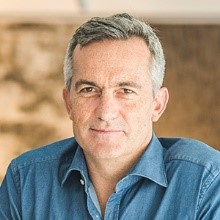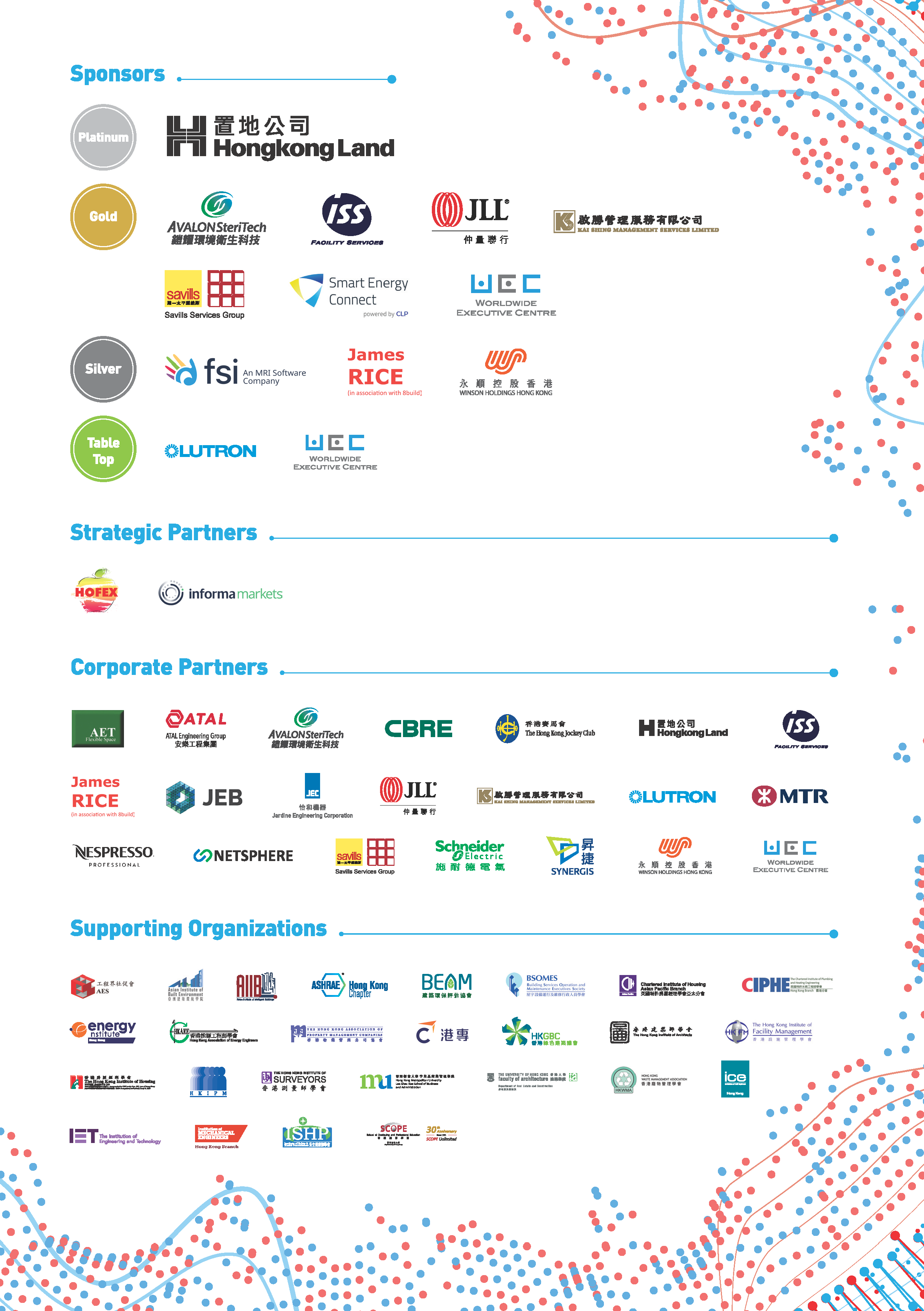

The Birth of SOS – How we can all move towards Sustainability |
  |
|
Mr Robert WALL, Managing Director, JEB |
||
|
Abstract It’s time to talk about the elephant in the room when we move or renovate an office. Did you know that the equivalent of 180,000 elephants of construction waste goes into landfill in Hong Kong? 20% of the world’s top 2000 companies have committed to net zero targets. China has committed to net zero by 2060 yet will hit peak emissions in 2030. Other than buying carbon credits I don’t see anyone laying down a tangible road map for how we are going to achieve these ambitious targets. I am sure that many of your clients are asking you as facilities managers and project managers for sustainable solutions. Today I hope to share one solution with you that you can take to your clients. So how did I get here talking to you guys about sustainability? Before COVID like many of you I was flying a lot. Building a business that focused on clients moving from one location to another or renovating. I used to look out of the plane window and see an impressive skyline of buildings and see opportunity. I started noticing as I was looking out of the plane window descending from the clouds green landscape turn into grey as nature became concrete and buildings. This was a birds eye view of mankind’s progress. This became a familiar observation as I traveled and uneasiness turned to anxiety. Every project that we were awarded was bitter sweet. A symbol or a reminder of progress and economic growth leading us blindly towards an unsustainable future. Anxiety turned into despair. It was an unbearable secret that I was unable to share with anyone. Despair drove me desperately towards what were our options. I started researching solutions to global environmental problems like ocean clean up technologies and machines that could suck carbon from the atmosphere. Unfortunately these were very far removed from the field in which I worked and my sphere of influence. So I started to look at OUR industry and how WE could make a difference. The answer just happened to be staring at me. Instead of focusing on where clients were moving, I looked in the rear view mirror. What was the client leaving behind. Where was all that office furniture and equipment going? Who was managing it? In March of this year I sat down with Tommy Chan, the Head of Real Estate for EY at the time and we discussed this problem and whether there was a solution. There were a few small players doing their best but how could we approach this with an exponential mindset. Over a cup of coffee we decided that EY moving 2500 people from CITIC Tower to OTP and Oxford House would be the perfect pilot project to roll out a program to reduce unwanted furniture and equipment going into landfill. The great news was that they were moving in 4 weeks time and new furniture for the project was being installed as we spoke. Tommy spoke to the project steering committee and we got the green light. I was excited and scared to death at the same time! What on earth had I just committed to? We quickly scrambled and set up a volunteer task force within JEB Group. It’s incredible how a good cause can galvanise us humans. If you ask a project manager how do you eat an elephant? He will tell you one bite at a time! We developed a 5 step process to tackle this enormous challenge. First we compiled a detailed inventory of the furniture including checking condition. This inventory document was the basis for our program. We then worked closely with EY and their project team to explore what could be reused in the new office. You can imagine the look on their faces when 4 weeks before the move we explained our bold aspirations given everything has already been ordered and delivered. To our delight quite a number of items were earmarked for reuse. The balance of the furniture inventory was offered to staff in a “Take Me Home” program. Again there were many items that were reserved so we collated all of the addresses of the staff that reserved furniture and arranged delivery. There were still a significant amount of assets left over on our inventory list. We built a database of donation partners including NGOs, schools, universities and SMEs and sent them the inventory available. Again there was good take up of items. We also found Circular Partners that could repurpose and recycle furniture. They were keen to work with us and also took a significant number of items. With a 4 week time constraint we saved over 4000 items. This was equivalent to 58 tonnes diverted from landfill. It was truly an amazing experience to see JEB staff and the project team volunteer their time to make such an impact. We had upcycling workshops on site where my kids joined in to painting and decorating storage pedestals to create awareness of how we can rethink how we can use of our assets. We provided a metal SOS tag with a QR code on all of the reused chairs. This QR code takes you to a landing page showing the project impact report. EY staff can be reminded on a daily basis of the action that was taken to have a positive impact on the environment. Together with the company’s internal PR, these tags created huge staff engagement and renewed hope especially after working from home for so long. This was an unexpected benefit but a very important one especially given that talent retention is one of the primary risks for all leading organisations and costs billions of dollars each year. So through this incredibly challenging project we discovered that this initiative could not only help to save the environment, it could also have a positive impact on society through a donation program. It was very import that the client was able to use this powerful and real story with tangible results to demonstrate their values to staff. The impact was clearly recorded on the Impact report enabling alignment of individual and organizational values. EY has committed to a net zero carbon target by 2025. By working with us they demonstrated that they are serious about achieving that target. So we Fast Forward from the pilot project to now. Sustainable Office Solutions Ltd has been incorporated and we have full time staff. We have streamlined and refined our project SOPs to create a simple and process driven program. We explain our process to our clients as a filtering process. Step 1 is to create that Inventory Report The first inventory filter is Client Reuse The second filter is Staff Take Home The third filter is Donate and Repurpose with Circular Partners Finally the fourth filter is Recycle JEB Group has 30 years of project management experience working with many of you and your colleagues. This is the foundation of our SOS Service. We understand the challenges that facilities managers and project managers face on a daily basis and we want to solve those challenges and make your jobs and your lives easier. SOS provides a solution that all of you can offer to your clients that is tangible and action based. We can provide meaningful and importantly science based reports that are a record of the impact of each project. Real reports showing tonnes and CO2 diverted from landfill is what every client wants right now. This is an exponential problem we are facing. Exponential problems require exponential solutions which can be found when we develop meaningful partnerships who all make a contribution. We are open source and invite everyone into our program who feels they can be a contributing partner and we hope it will be many of you here today. SOS is a catalyst for us all to join forces to solve these issues. I hope that we can inspire many of you to go to go out and solve another problem. It just requires some commitment and to not be afraid of discussing the elephant in the room. Biography Originally from Perth, Australia, Robert Wall graduated with a degree in commerce from the University of Western Australia. He joined Singapore-based wall distributorship JEB Asia Group upon graduating in 1993. As the company’s sales and technical manager, he helped develop the Singapore market for the firm’s autoclaved aerated concrete division (A.A.C.) and introduced a revolutionary method of constructing lightweight interior partitions. Today as Managing Director of JEB, Robert is based in Hong Kong, driving product development and overseeing the Greater China market. He also assists with concept designs to meet the requirements of a variety of projects. With a strong background in construction, design, sales and marketing, Robert understands what architects and clients need when it comes to glazing systems. By keeping up to date with industry trends, he ensures that JEB Greater China is a leader, rather than a follower in the use of glass in interior and exterior construction. |
